 0555-6768298
0555-6768298
 0555-6768298
0555-6768298
إذا كانت لديك أسئلة أو اقتراحات، يرجى ترك رسالة لنا، وسوف نقوم بالرد عليك في أقرب وقت ممكن!
اتصل بنا
مزايا الإنتاج بضربتين أو ثلاث ضربات تقليل العلامات من خلال جهاز التثبيت المحمل بنابض يتم تقوية المكونات النشطة إمكانية تكرار عالية من خلال مقياس خلفي متكامل اختبار وظيفي وضبط من خلال ثنيات الاختبار - مع أوراق العينة الخاصة بك مناسبة لسمك المادة حتى 4.0 مم كحد أدنى من الداخل Ø: 2,5 مم × سمك المادة للفولاذ والألومنيوم 3,0 مم × سمك المادة للفولاذ المقاوم للصدأ
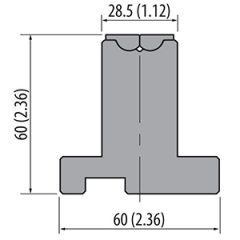
اضغط على قوالب الفرامل rolla-v بدون خدش، ومن الأفضل وضع الفيلم على سطح قطعة العمل عند الانحناء. وسوف نوصي بحجم القالب المناسب لك وفقًا للوحة التي تنحنيها.

قوالب شيم القابلة للتعديل يمكن اعتبار القوالب السفلية القابلة للتعديل واحدة من أكثر الإضافات تنوعًا لمكابح الضغط. باستخدام هذا النوع من الأدوات ، يمكن ترتيب الفتحات من 6.35 مم إلى 381 مم. يتم توفير الفواصل لإنتاج الفتحة المطلوبة. تسمح الفواصل المشقوقة بإزالة سهلة لتغيير فتحة القالب. عندما لا تكون قيد الاستخدام ، يتم وضع الفواصل على جوانب كتلة القالب. يمكن تجهيز هذه القوالب بأطوال صلبة أو مقطوعة لتسهيل التعامل معها.
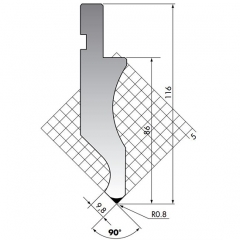
حجم شفرة stright: 835 * 146 * 26mm ، 90 درجة. المادة 42CrMo4 ، صلابة HRC47 +/- 3

حجم شفرة سترايت: 835 * 175 * 40 مم ، 60 درجة. المادة 42CrMo4 ، صلابة HRC47 +/- 3

حجم شفرة stright: 835 * 146 * 26mm ، 90 درجة. المادة 42CrMo4 ، صلابة HRC47 +/- 3
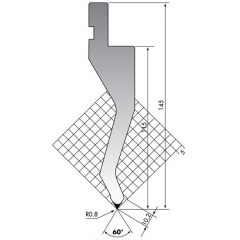
حجم شفرة سترايت: 835 * 145 * 32 مم ، 60 درجة. المادة 42CrMo4 ، صلابة HRC47 +/- 3
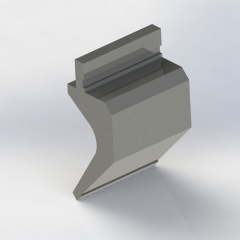
حجم لكمة معقوفة: 835 * 197 * 92 مم ، 88 درجة. المادة 42CrMo4 ، صلابة HRC47 +/- 3. والارتفاع 197 مم والعرض 92 مم. يمكن أن يتم حسب طلب الزبون.
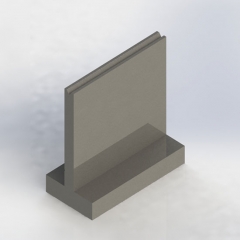
حجم يموت التلفزيون: 835 * 120 * 60 مم ، V12،30 درجة. المادة 42CrMo4 ، صلابة HRC52-58. يمكن تصنيع V6 و V8 و V10 و V16 و V20 و V25 وفقًا لطلب العميل.
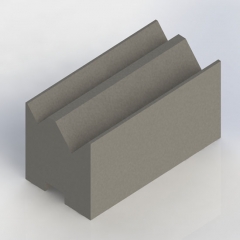
يموت 2V ذاتي التمركز ، الحجم 835 * 46 * 50 مم ، 88 درجة ، الوزن 17 كجم. ويمكننا صنع V5-V9 ، V8-V12 ، V12-V20 ، V16-V25 وفتحات V أخرى وفقًا لسمك الانحناء.
What is the best material for press brake tooling?
In the field of sheet metal fabrication, the material selection of press brake tools directly determines its wear resistance, service life, and forming accuracy. To ensure production efficiency and product quality, it is especially important to choose tooling materials scientifically. However, with so many material options available on the market, customers are often confused when making a decision. So, how can one choose the "best" tooling material? This article will explore the topic from four key perspectives.
Based on Sheet Material Type
Different sheet materials require different tooling materials. The most commonly used press brake Moulds materials on the market include 42CrMo, T8/T10, H13, and SKD11/D2. Among them, high-strength and tough alloy steels like 42CrMo are sufficient for most general bending tasks. However, for materials such as stainless steel, which have higher strength and springback, harder and more wear-resistant tooling materials like SKD11 or H13 are more suitable.
Based on production volume and usage frequency
For long-running production lines or high-frequency operations, it's wise to use more wear-resistant materials like H13 or SKD11. While these come at a higher upfront cost, they significantly reduce downtime and tooling replacement. For short runs or occasional use, 42CrMo offers a great balance of performance and affordability.
Based on precision requirements
High-precision sheet metal parts often require higher hardness and stability from the tooling. In such cases, it is recommended to use high-hardness materials like SKD11 to prevent deformation and maintain consistent bending angles over time. Tooling with lower hardness is more likely to wear out or deform with prolonged use, which can negatively impact product accuracy.
Based on Cost
In general, high-quality tooling materials tend to be more expensive, but they offer a longer service life and require less maintenance. In the long run, despite the higher initial investment, the overall cost of use is actually lower. For customers who prioritize efficiency and stability, choosing high-grade materials is a wise investment.
In conclusion, there is no single standard answer when it comes to selecting press brake tooling materials. The right choice should be based on a comprehensive evaluation of material type, production goals, quality requirements, and budget.
At Golin, we are committed to using high-quality materials such as 42CrMo and SKD11, combined with advanced heat treatment processes to ensure our tools are both strong and durable. We also offer customized material and hardness options tailored to our customers' specific bending needs.If you have any further questions or would like to learn more, feel free to contact us anytime!
 عبر الانترنت
عبر الانترنت 0555-6768298
0555-6768298 0555-6769126
0555-6769126 sales2@cngolin.cn
sales2@cngolin.cn +86 18251802252
+86 18251802252